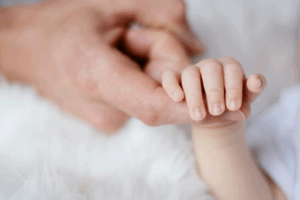
In the mid 1940’s European psychiatrists studied the development of babies in institutions, deprived of the emotional warmth of a mother, father, or one-on-one caregiver.
These researchers saw infants who failed to thrive and had a high two-year mortality rate.
What seemed to heal these children was human touch.
Touch communicates powerfully. For our children touch builds relationships with family members. Touching and being touched also help children learn to pay attention, not only to others but also to their own emotions and thoughts.
Our loving touch orients a child about where he or she begins and ends. Touch connects us to others, allowing us to feel part of a family, and part of a community.
Touch helps us focus our attention, letting us know what to listen to, who to listen to, when to listen, and more. Our children require loving human touch to thrive. In today’s world touching children in order to communicate love, concern, and connection seems to be off-limits even for parents.
The late Virginia Satir, a family therapist, recommended four hugs a day to survive, eight hugs per day to stay at a strong emotional level and twelve a day to grow. With our busy lives, the time to hug and be hugged seems to be in short supply. Children, though, may go to great lengths to get the amount of touching they need to survive and thrive. We may find that our making the first move in communicating with touch creates strong bonds of trust.
Here are some tips for offering the touch of kindness and attention:
Use a gentle touch by always using the least amount of pressure necessary to communicate the maximum amount of caring. We want our hugs to be Goldilocks hugs—not too tight, not too quick, but just right. We can ask for input. “Tell me when I hug you just right.”
Be aware of your touch. Be present in the moment and use your touch to help you be more mindful of the situation. Take a deep breath and focus on the gift of time.
When we are mindful of our touch, we also touch and hold our child with our full strength. Remember those times of being carried to bed when you were so tired? Let your child, like in the old gospel song, feel as though you “have the whole world in your hands.”
Dancing on daddy’s shoes. Do you remember that kind of touch? My dad would let us stand on his feet and he’d dance around with us, or pretend to be a bear stomping through the woods. It was delightful and it communicated love and caring, and…fun! Move with your child as if the two of you were Fred Astaire and Ginger Rogers.
It takes two to tango. Be aware of your child’s response to your touch and be responsive to his response. Your response should be gentle, kind and strong.
Let your hands be another pair of eyes. Touch as if you had eyes in your fingers and the palms of your hands, with a vision of acceptance of who your child is. Practice by closing your eyes and touch a familiar object with care and deliberation. Spend ten minutes seeing a pineapple with your hands.
Use touch to help your child pay attention and thrive in happy healthy relationships.
